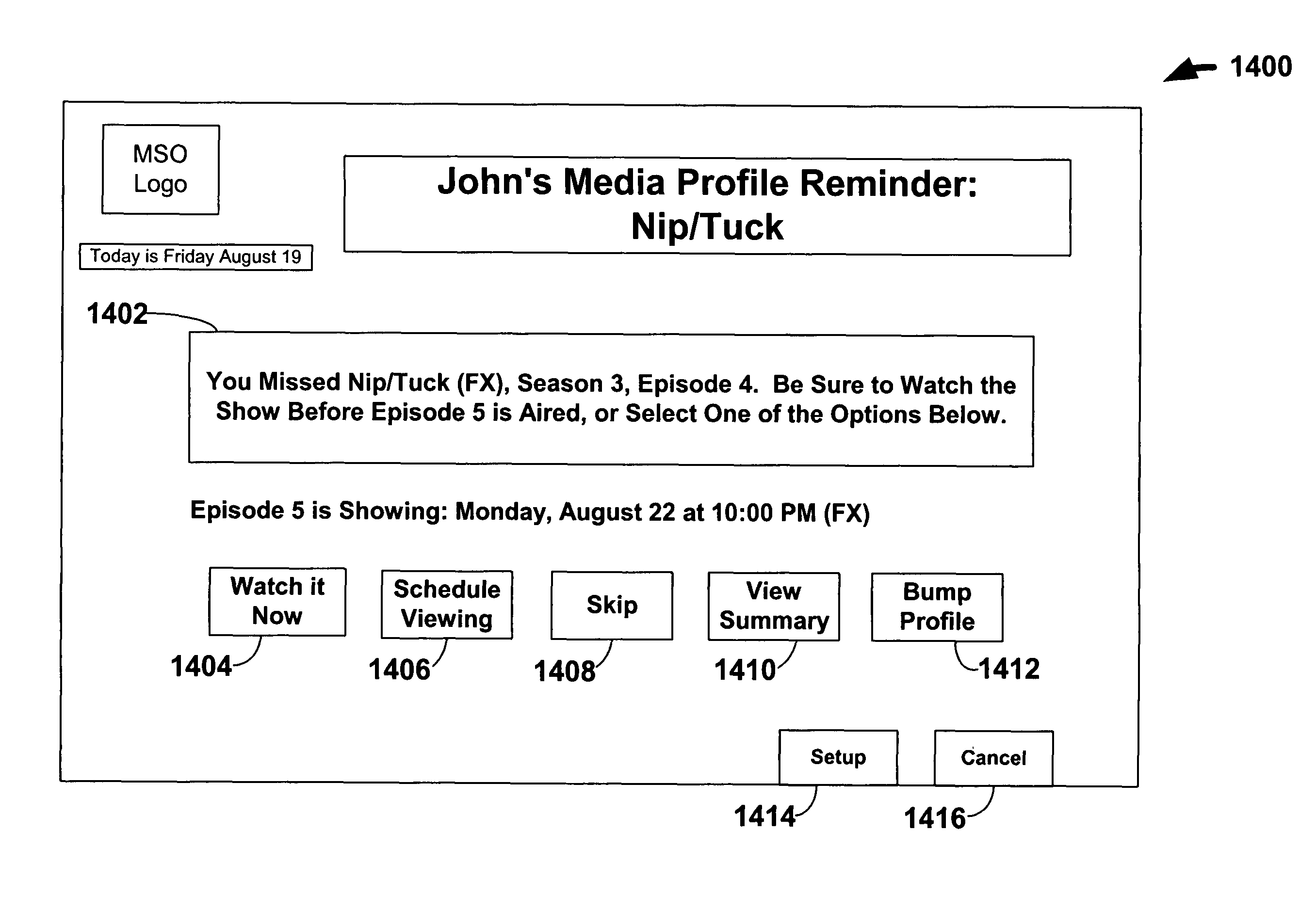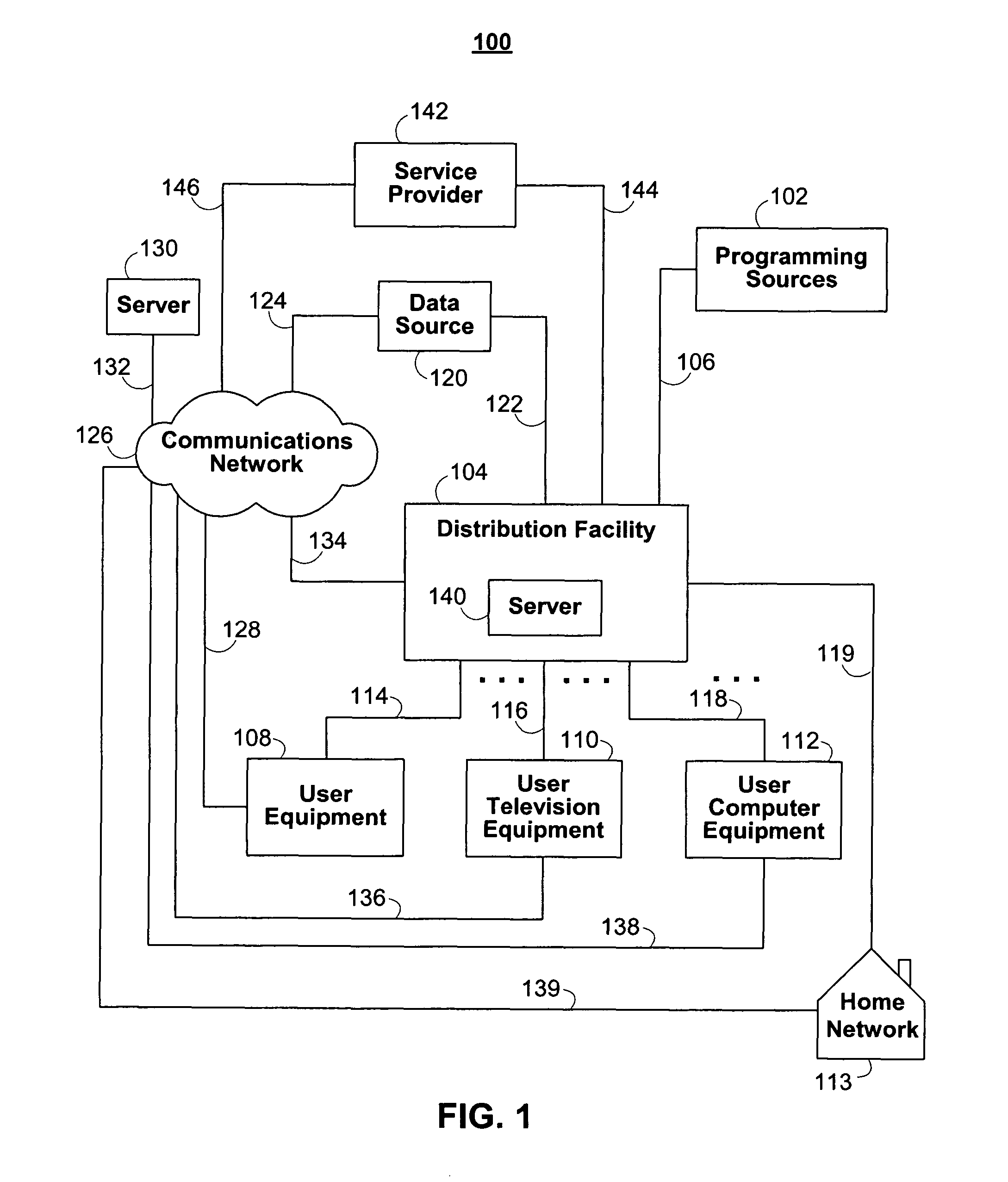Systems and methods for episode tracking in an interactive media environment
a technology of interactive media environment and system, applied in the field of interactive media environment, can solve the problems of viewing confusion or losing interest in media content, and the known interactive media environment does not track and report a user's progress through a series of related programming
- Summary
- Abstract
- Description
- Claims
- Application Information
AI Technical Summary
Benefits of technology
Problems solved by technology
Method used
Image
Examples
Embodiment Construction
[0033]The amount of media available to users in any given media delivery system can be substantial. Consequently, many users desire a form of media guidance, an interface that allows users to efficiently navigate media selections and easily identify media that they may desire. An application which provides such guidance is referred to herein as an interactive media guidance application or, sometimes, a guidance application.
[0034]Interactive media guidance applications may take various forms depending on the media for which they provide guidance. One typical type of media guidance application is an interactive television program guide. Interactive television program guides are well-known guidance applications that, among other things, allow users to navigate among and locate television programming viewing choices and, in some systems, digital music. The television programming (and music programming) may be provided via traditional broadcast, cable, satellite, the Internet, or other d...
PUM
 Login to View More
Login to View More Abstract
Description
Claims
Application Information
 Login to View More
Login to View More - R&D
- Intellectual Property
- Life Sciences
- Materials
- Tech Scout
- Unparalleled Data Quality
- Higher Quality Content
- 60% Fewer Hallucinations
Browse by: Latest US Patents, China's latest patents, Technical Efficacy Thesaurus, Application Domain, Technology Topic, Popular Technical Reports.
© 2025 PatSnap. All rights reserved.Legal|Privacy policy|Modern Slavery Act Transparency Statement|Sitemap|About US| Contact US: help@patsnap.com



